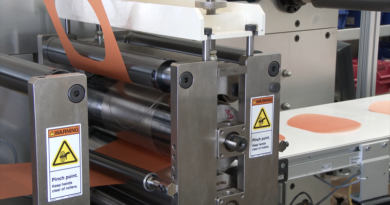The Ultimate Guide for DIY School Bus Conversions
A trend that has gained popularity among individuals who are interested in an alternative way of life, minimalists, and adventurers, is the transformation of a school bus into a place that is comfortable and livable. Converting a school bus into a tiny house is a do-it-yourself project that gives countless opportunities for personalization and creativity, regardless of whether you are planning a cross-country road trip or a permanent tiny home.
However, to complete such a project, meticulous planning and execution are required. If you want your transition to be successful, this article will provide you with six key points to follow.
Plan Your Layout
Taking the time to sketch out a precise floor plan for your bus conversion is something you can do before really taking up your wrench or paintbrush. When creating the layout, take into consideration your lifestyle, your demands, and your priorities.
Consider how you will make use of the area, including where you will sleep, cook, eat, and rest. Storage solutions can be optimized to improve space efficiency and avoid clutter as much as possible. The process of construction can be streamlined with the help of planning, which can also help avoid costly mistakes later.
Focus On Insulation and Climate Control
When it comes to creating a pleasant living environment inside your converted school bus, having the appropriate insulation is essential. Investing in high-quality insulating materials will allow you to control the temperature, lessen the amount of noise, and avoid the accumulation of moisture. If you want to achieve the best possible thermal performance, you can think about employing a combination of spray foam, rigid foam boards, and insulation panels.
In addition, install heating and cooling systems that are effective in keeping the interior temperature at a comfortable level throughout the entire year. Functionality, safety, and energy economy can be your main priorities when selecting a heating system, whether it be a wood stove, a gas heater, or an air conditioner for your rooftop.
Utilize Materials That Are Long-Lasting and Durable
When choosing materials for your school bus conversion, you can give durability, longevity, and weight savings the highest priority. Choose materials that are not only lightweight but also robust, as these materials can resist the rigors of life on the road without adding extra mass to your vehicle. Plywood, bamboo, and composite materials are frequently used for flooring, cabinetry, and paneling because they have a high strength-to-weight ratio and are versatile.
If you want to build something sustainable and kind to the environment, you can think about using reused or salvaged materials. It is important to remember to seal and protect exposed surfaces to extend their lifespan and reduce the amount of maintenance that is required.
Pay Attention to Plumbing and Electrical Systems
To create a fully self-contained living space in your converted school bus, it is vital to design and install plumbing and electrical systems that are functioning. It is important to carefully plan the architecture of water tanks, pipes, and fixtures to maximize the usage of space and allow for easy access. If you want to reduce the likelihood of leaks, corrosion, and malfunctions while you are driving, you can invest in high-quality components and fittings.
Along the same lines, you can devise a reliable electrical system that can fulfill your requirements for powering your lighting, appliances, electronic gadgets, and other devices. It is a good idea to think about including solar panels, batteries, and inverters to generate power off the grid and achieve energy independence.
Prioritize Safety and Compliance
When transforming a school bus into a living area, safety can always be the primary concern that is taken into consideration. To ensure that you are following the legal requirements, you need to get familiar with the applicable construction codes, laws, and safety standards. To reduce the likelihood of fire threats occurring, it is recommended to install smoke detectors, carbon monoxide alarms, and fire extinguishers.
Make sure that heavy furniture and appliances are adequately secured so that they do not move around or fall while they are being transported. It is important to perform routine inspections of the structural integrity of your bus and to swiftly treat any evidence of rust, corrosion, or damage that appears. On the off chance that structural repairs or reinforcements are required, you might want to think about consulting with a professional engineer or contractor.
Embrace Creativity and Personalization
It is essential to consider practical factors while also incorporating your individuality and sense of style into the process of converting your school bus. To make your used school bus more like a home, you should use your imagination when it comes to interior design, decorating, and finishing touches.
You can discover what works best for you in terms of color scheme, texture, and pattern by playing around with various options. Adding personality and allure to your living environment can be accomplished by including personal memories, artwork, and memorabilia.
Conclusion
The transformation of a school bus into a living space that is both comfortable and practical is an activity that is not only difficult but also rewarding. It provides an infinite number of opportunities for personalization and adventure. Through the application of these six suggestions for do-it-yourself school bus conversions, you will be able to change your typical vehicle into an incredible home on wheels.
A successful and satisfying conversion experience can be achieved by careful planning, attention to detail, and a splash of imagination. Be ready to roll up your sleeves, let your imagination go wild, and get ready to embark on the voyage of a lifetime with your very own converted school bus.




